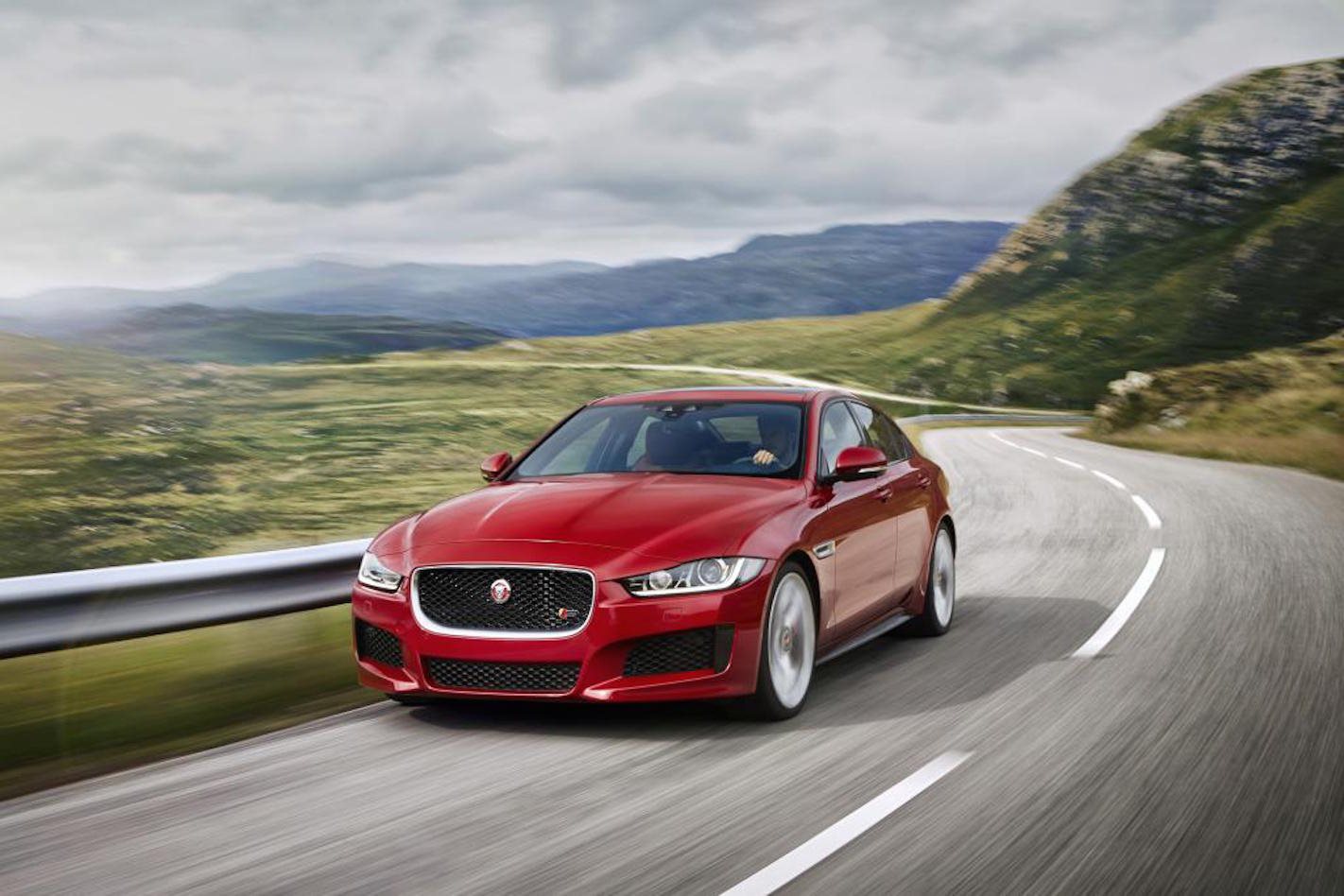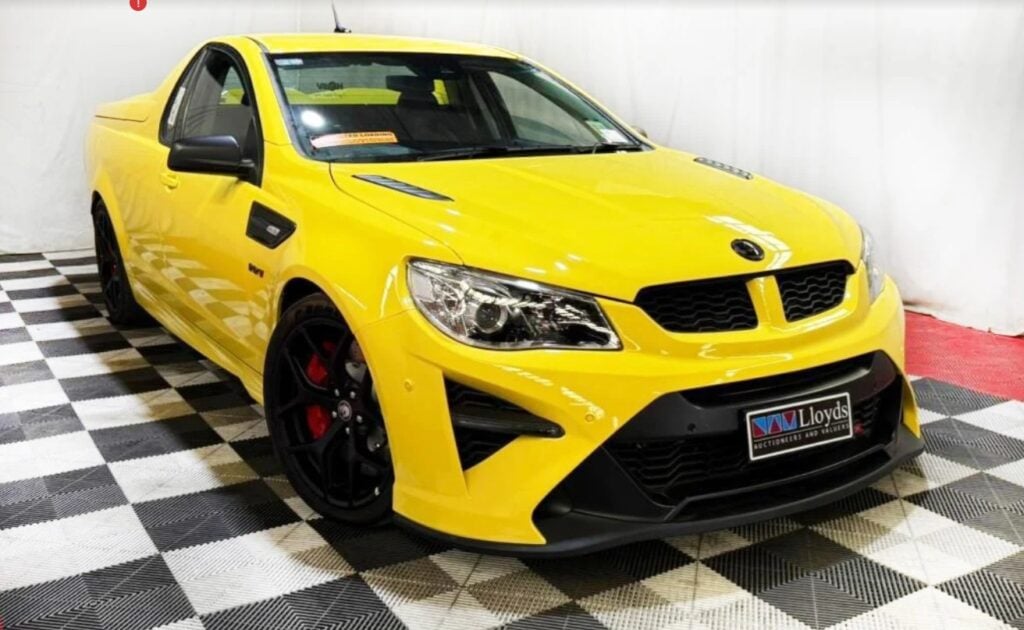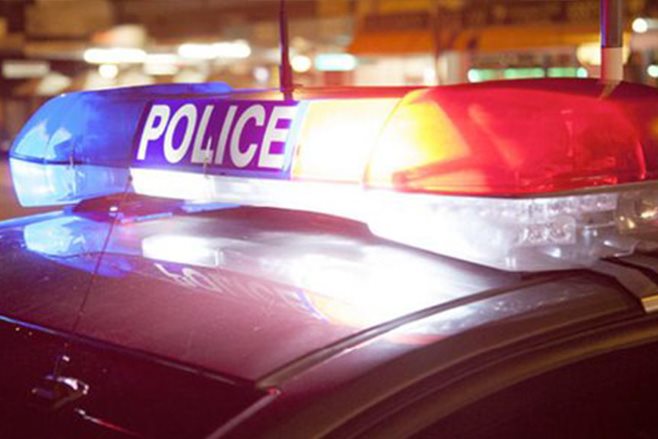THE 2015 Jaguar XE sedan will start from $60,400 when it goes in sale in Australia on 1 September. That means it undercuts the entry level BMW 3 Series, the $61,500 BMW 320i, but will cost more than the $59,990 Mercedes C180 Avantgarde – a Wheels COTY finalist – the aging 2015 Audi A4 S Line at $55,500 and Lexus IS250 at $54,000.
“This will be our best selling car,” a Jaguar Australia spokesperson James Scrimshaw told Wheels. “The BMW 3 Series is definitely one of the competitors we’ve targeted,” he added, with dealers already more than happy sell the XE ahead of its arrival later this year.
The XE is Jaguar’s all-new entry into a segment that’s been dominated by the German makes, with the BMW 3 Series celebrating forty years of production in 2015. It follows the formula set by the BMW and Mercedes C-Class of rear-wheel drive and, at 4672mm long and 1850mm wide, has similar dimensions. It’s the smallest, lightest and stiffest Jaguar sedan ever offered, and has the same class-leading aero Cd of 0.26 as the C-Class.
The XE range will be split into four spec levels familiar to existing Jag buyers, kicking off with Prestige, R-Sport, Portfolio and headlined by a flagship S model; that is until rumoured high-performance models may emerge.
The Prestige models come with six-spoke 18-inch alloy wheels, bi-xenon headlights, keyless entry and start as well as leather upholstery. Inside there’s an eight-inch touchscreen with sat-nav and voice control, as well as a reversing camera and auto parking assist, with Lane Departure Warning, radar cruise and autonomous emergency braking also included. An 11-speaker 380W Meridian audio system is also part of the impressive equipment list.
Portfolio models, from $70,400, come with a seven-spoke 18-inch alloys, ‘Windsor’ leather and a rear sun-blind, while R-Sport brings yet another wheel design of the same size, stiffer suspension and a body kit from $66,800. Only the $104K S model comes with 19s as well as adaptive dampers, on top of a more extensive body kit.
At launch in Australia, there will be four engines – one turbo-diesel four-cylinder, two turbocharged petrol four-cylinders and a supercharged V6. All models use an eight-speed automatic transmission.
The base Jaguar XE 20t Prestige at $60,400 costs more then the cheapest offerings from Mercedes and Audi, its 147kW/280Nm 2.0-litre turbocharged four-cylinder easily makes it class competitive, outmuscling the BMW 320i, Mercedes C200 and Audi A4, even if it can’t match the Audi’s 350Nm nor the Mercedes’ 300Nm.
For more grunt, step up to the XE 25t – offered in Prestige and R-Sport trim – which sees 177kW/340Nm from the same engine, with 0-100km/h improving to 6.8sec and an identical economy figure of 7.5L/100km.
The other four-pot on the XE shopping list is the diesel, offered on the 20d and producing 132kW peak power and 430Nm from a low 1750rpm. While its 7.8sec 0-100km/h time is shy of the BMW 320d’s 7.5sec and well behind the Mercedes C250 BlueTEC’s 6.6sec, the Jaguar’s superior 4.2L/100km fuel economy makes up for it. Sadly, the diesel XE is lumped with a smaller 56-litre fuel tank than the petrol models, which carry 63 litres, but that still gives the diesel Jag a theoretical range of more than 1000km (again, theoretically).
Bookending the opening line-up this September is the S model, which takes the 250kW/450Nm supercharged V6 straight from the stunning Jaguar F-Type sports car, albeit with less power. That helps blow the price out to more than $104K – $10K more than the $93,430 BMW 335i and even the $99,430 Mercedes C350 Coupe. It easily out accelerates both, with a 0-100km/h time of 5.1sec compared to the BMW’s 5.5sec and Merc’s 6.0sec, but the Jag’s sprint is backed by a pop and cackle unrivalled in this class. It is thirstier that both, though, with an official 8.1L/100km fuel figure, yet that’s still respectable.
One of the key factors for the XE is the extensive use of aluminium in its construction, which has kept weight down as Jaguar has promised. The lightest model is the 2.0-litre turbo petrol models, with a claimed 1530kg mass. That’s the same weight at a front-wheel drive 1.8 TFSI Audi A4, but still more than the BMW 320i (1400kg) and Mercedes C200 (1465kg). So a good effort, but it’s hardly groundbreaking.
The heaviest XE is the V6 S, at 1665kg compared to the 1510kg BMW 335i.
Down the track, Jaguar may introduce an all-wheel drive XE, with confirmation from Jaguar that its new hero’s platform is engineered to accommodate an electronic system on top of the ‘All Surface Progress Control’ stability program offered on all XE models. However the manual version, currently offered overseas, may not make it here, even if manual version of the F-Type sports car was launched here earlier this year.
There’s also a possibility of multiple body styles, from a wagon to a coupe and even convertible, which are logical steps from the sedan if you look at Jaguar’s rivals in this class. Of course, we’re waiting for a V8-powered XE R model and fire-breathing XE R-S with the maker’s 5.0-litre supercharged V8 under the bonnet to rub shoulders with the likes of the BMW M3 and Mercedes-AMG C63, but the company is still undecided on engines for such a model, yet alone confirmation it will produce one.
Read John Carey’s drive of the Jaguar XE in the July issue of Wheels, on sale now.
Sign up here to receive the latest round-up of Wheels news, reviews and video highlights straight to your inbox each week.





